- Clone
- 3G8 (See other available formats)
- Regulatory Status
- RUO
- Workshop
- V NK80
- Other Names
- FcγRIII, Fc gamma receptor, Fc gamma receptor 3
- Isotype
- Mouse IgG1, κ
- Ave. Rating
- Submit a Review
- Product Citations
- publications
CD16 is known as low affinity IgG receptor III (FcγRIII). It is expressed as two distinct forms (CD16a and CD16b). CD16a (FcγRIIIA) is a 50-65 kD polypeptide-anchored transmembrane protein. It is expressed on the surface of NK cells, activated monocytes, macrophages, and placental trophoblasts in humans. CD16b (FcγRIIIB) is a 48 kD glycosylphosphatidylinositol (GPI)-anchored protein. Its extracellular domain is over 95% homologous to that of CD16a, and it is expressed specifically on neutrophils. CD16 binds aggregated IgG or IgG-antigen complex which functions in NK cell activation, phagocytosis, and antibody-dependent cell-mediated cytotoxicity (ADCC).
Product DetailsProduct Details
- Verified Reactivity
- Human, Cynomolgus, Rhesus
- Reported Reactivity
- African Green, Baboon, Capuchin Monkey, Chimpanzee, Common Marmoset, Pigtailed Macaque, Sooty Mangabey, Squirrel Monkey
- Antibody Type
- Monoclonal
- Host Species
- Mouse
- Immunogen
- Human PMN cells
- Formulation
- Phosphate-buffered solution, pH 7.2, containing 0.09% sodium azide
- Preparation
- The antibody was purified by affinity chromatography and conjugated with Spark Blue™ 574 under optimal conditions.
- Concentration
- 0.2 mg/mL
- Storage & Handling
- The antibody solution should be stored undiluted between 2°C and 8°C, and protected from prolonged exposure to light. Do not freeze.
- Application
-
FC
- Recommended Usage
-
Flexi-Fluors™ are provided at a standard 0.2 mg/mL concentration. We recommend titrating this reagent to determine the optimal concentration for each application. For many flow cytometry applications, conjugated antibodies perform well at concentrations ranging from 0.03 to 1.0 µg per million cells in 100 µL. We recommend testing a range of concentrations starting from 10 µg/mL.
For example, make five 1:1 serial dilutions of the 0.2 mg/mL antibody. Add 5 µL of each dilution (including the undiluted antibody) to 100 µL of cells (at 107 cells/mL) to test six concentrations -- 1.0, 0.5, 0.25, 0.125, 0.06, and 0.03 µg per million cells in 100 µL volume. Compare staining patterns or create a titration curve using the MFI or staining index to determine the optimal concentration. - Excitation Laser
-
Blue Laser (488 nm)
- Application Notes
-
The 3G8 antibody clone blocks neutrophil phagocytosis and stimulates NK cell proliferation. It has been reported that this clone interacts with the FcγRIIa and FcγRIIIb receptors causing neutrophil activation and aggregation18. Due to this phenomenon staining in whole blood may cause a reduction in the number of granulocytes or alter their scatter profile.
Additional reported applications (for the relevant formats) include: immunohistochemical staining of acetone-fixed frozen tissue sections6, immunoprecipitation3, stimulation of NK cell proliferation4, blocking of phagocytosis5, and blocking of immunoglobulin binding to FcγRIII7,8. The Ultra-LEAF™ purified antibody (Endotoxin < 0.01 EU/µg, Azide-Free, 0.2 µm filtered) is recommended for functional assays (Cat. No. 302049, 302050, 302057, 302058). - Additional Product Notes
-
For more information about Flexi-Fluors™, visit our Flexi-Fluor™ page and review FAQs associated with this product line.
-
Application References
(PubMed link indicates BioLegend citation) -
- Knapp W, et al. Eds. 1989. Leucocyte Typing IV. Oxford University Press. New York.
- Schlossman S, et al. Eds. 1995. Leucocyte Typing V. Oxford University Press. New York.
- Edberg J, et al. 1997. J. Immunol. 159:3849. (IP)
- Hoshino S, et al. 1991. Blood 78:3232. (Stim)
- Tamm A, et al. 1996. Immunol. 157:1576. (Block)
- Da Silva DM, et al. 2001. Int. Immunol. 13:633. (IHC)
- Holl V, et al. 2004. J. Immunol. 173:6274. (Block)
- Hober D, et al. 2002. J. Gen. Virol. 83:2169. (Block)
- Brainard DM, et al. 2009. J. Virol. 83:7305. PubMed
- Smed-Sörensen A, et al. 2008. Blood 111:5037. (Block) PubMed
- Timmerman KL, et al. 2008. J. Leukoc. Biol. 84:1271. (FC) PubMed
- Yoshino N, et al. 2000. Exp. Anim. (Tokyo) 49:97. (FC)
- Rout N, et al. 2010. PLoS One 5:e9787. (FC)
- Kim WK, et al. 2006. Am. J. Pathol. 168:822. (FC)
- Boltz A, et al. 2011. J. Biol Chem. 286:21896. PubMed
- Wu Z, et al. 2013. J. Virol. 87:7717. PubMed
- Peterson VM, et al. 2017. Nat. Biotechnol. 35:936. (PG)
- Vossebeld PJ, et al. 1997. Biochem J. 323:87-94 (Stim)
- RRID
-
AB_3106286 (BioLegend Cat. No. 285021)
Antigen Details
- Structure
- Ig superfamily, transmembrane form (50-65 kD) or GPI-linked form (48 kD)
- Distribution
-
NK cells, activated monocytes, macrophages, neutrophils
- Function
- Low affinity IgG Fc receptor, phagocytosis, ADCC
- Ligand/Receptor
- Aggregated IgG, IgG-antigen complex
- Cell Type
- Dendritic cells, Macrophages, Monocytes, Neutrophils, NK cells
- Biology Area
- Immunology, Innate Immunity
- Molecular Family
- CD Molecules, Fc Receptors
- Antigen References
-
1. Fleit H, et al. 1982. P. Natl. Acad. Sci. USA 79:3275.
2. Stroncek D, et al. 1991. Blood 77:1572.
3. Wirthmueller U, et al. 1992. J. Exp. Med. 175:1381. - Gene ID
- 2214 View all products for this Gene ID
- UniProt
- View information about CD16 on UniProt.org
Related FAQs
- Is our human Trustain FcX™ (cat# 422302) compatible with anti human CD16, CD32 and CD64 clones 3G8, FUN-2 and 10.1 respectively?
-
Yes
- What are Flexi-Fluors?
-
Flexi-Fluors are rapidly made-to-order conjugated antibodies. The technology, manufacturing processes, and specifications used to create Flexi-Fluors are the same as our regular catalog products. However, the optimal concentration and performance of each Flexi-Fluor must be determined by the customer.
- How quickly will I receive my order?
-
We aim to ship Flexi-Fluors within 2-3 weeks of receipt of your order. However, depending on your location, shipping times may vary.
- How are Flexi-Fluors different from regular catalog products?
-
Flexi-Fluors are made on demand, specifically for you. Flexi-Fluors are manufactured using the same high-quality standards, and specifications as other catalog products. For faster delivery, Flexi-Fluors are not tested by flow cytometry to determine optimal concentrations or evaluate performance. This testing needs to be performed by the customer.
- How do I determine the optimal concentration for using my Flexi-Fluor? How should I titrate my antibody?
-
Flexi-Fluors are provided at a standard 0.2 mg/mL concentration. We recommend that you titrate your antibody to determine the optimal concentration to use for your application. For many flow cytometry applications, conjugated antibodies perform well at concentrations ranging from 0.03 to 1.0 µg per million cells in 100 µL volume. We recommend that you test a range of concentrations starting from 10 µg/mL.
For example, make five 1:1 serial dilutions of your 0.2 mg/mL antibody. Add 5 µL of each dilution (including the undiluted antibody) to 100 µL of cells (at 107 cells/ml) to test six concentrations - 1.0, 0.5, 0.25, 0.125, 0.06, and 0.03 µg per million cells in 100 µL volume. Compare staining patterns or create a titration curve using the MFI or staining index to determine the optimal concentration.
- I can’t find the antibody-dye combination that I need. When will it be available?
-
We continuously update our catalog, introducing scores of new products every month. Please get in touch with our Technical Service team for an update on new products or recommendations for suitable alternatives to complete your panel. Or contact Custom Solutions to inquire about our affordable custom conjugation services.
- I need help to validate the performance of my Flexi-Fluor. Who should I contact?
-
Please get in touch with Technical Service for assistance.
- Can I order more than 50 μg of a Flexi-Fluor?
-
Yes, you can order multiple vials of the same Flexi-Fluor products. We cannot guarantee, however, that these vials will be bottled from the same lot. For bulk single-lot orders, contact our Custom Solutions team.
- What is the expiration date of my Flexi-Fluor?
-
Expiration dates can be found on the vial label or by using our CoA lookup tool.
Other Formats
View All CD16 Reagents Request Custom ConjugationCompare Data Across All Formats
This data display is provided for general comparisons between formats.
Your actual data may vary due to variations in samples, target cells, instruments and their settings, staining conditions, and other factors.
If you need assistance with selecting the best format contact our expert technical support team.
-
APC anti-human CD16

Human peripheral blood lymphocytes stained with 3G8 APC -
Biotin anti-human CD16

Human peripheral blood lymphocytes stained with biotinylated... -
FITC anti-human CD16

Human peripheral blood lymphocytes stained with 3G8 FITC -
Brilliant Violet 711™ anti-human CD16
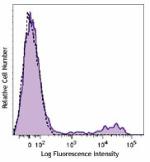
Human peripheral blood lymphocytes were stained with CD16 (c... -
PE anti-human CD16
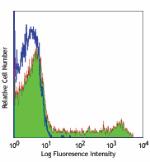
Human peripheral blood lymphocytes stained with 3G8 PE 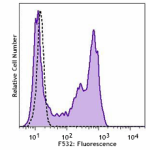
Human peripheral blood was stained with CD16 (clone 3G8) PE ... -
PE/Cyanine5 anti-human CD16
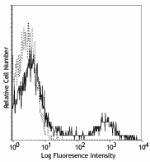
Human peripheral blood lymphocytes stained with 3G8 PE/Cyani... -
Purified anti-human CD16
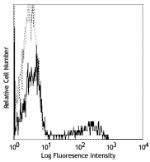
Human peripheral blood lymphocytes stained with purified 3G8... -
APC/Cyanine7 anti-human CD16

Human peripheral blood lymphocytes stained with CD56 (NCAM) ... -
PE/Cyanine7 anti-human CD16

Human peripheral blood lymphocytes stained with 3G8 PE/Cyani... -
Alexa Fluor® 488 anti-human CD16
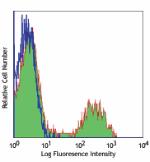
Human peripheral blood lymphocytes stained with 3G8 Alexa Fl... -
Alexa Fluor® 647 anti-human CD16
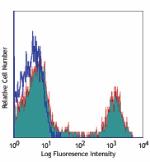
Human peripheral blood lymphocytes stained with 3G8 Alexa Fl... -
Pacific Blue™ anti-human CD16
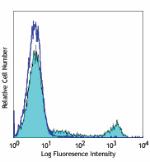
Human peripheral blood lymphocytes stained with 3G8 Pacific ... -
Alexa Fluor® 700 anti-human CD16
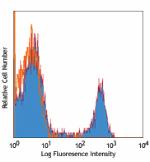
Human peripheral blood lymphocytes stained with 3G8 Alexa fl... -
PerCP/Cyanine5.5 anti-human CD16

Human peripheral blood lymphocytes were stained with CD56 AP... -
PerCP anti-human CD16
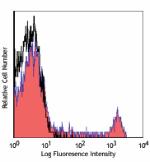
Human peripheral blood lymphocytes stained with 3G8 PerCP -
Brilliant Violet 421™ anti-human CD16
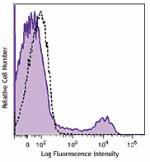
Human peripheral blood lymphocytes were stained with CD16 (c... -
Brilliant Violet 570™ anti-human CD16
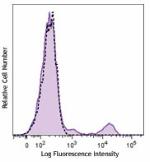
Human peripheral blood lymphocytes were stained with CD16 (c... -
Brilliant Violet 605™ anti-human CD16
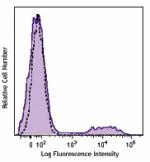
Human peripheral blood lymphocytes were stained with CD16 (c... -
Brilliant Violet 650™ anti-human CD16
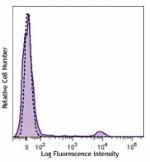
Human peripheral blood lymphocytes were stained with CD16 (c... -
Brilliant Violet 785™ anti-human CD16

Human peripheral blood lymphocytes were stained with CD56 AP... 
-
Brilliant Violet 510™ anti-human CD16
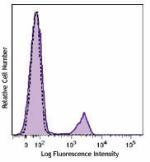
Human peripheral blood lymphocytes were stained with CD16 (c... -
Ultra-LEAF™ Purified anti-human CD16
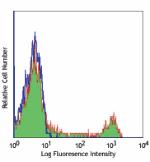
Human peripheral blood lymphocytes stained with Ultra-LEAF™ ... -
Purified anti-human CD16 (Maxpar® Ready)
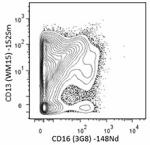
Human PBMCs stained with 152Sm-anti-CD13 (WM15) and 148Nd-an... -
PE/Dazzle™ 594 anti-human CD16
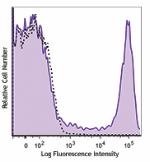
Human peripheral blood lymphocytes were stained with CD16 (c... -
APC/Fire™ 750 anti-human CD16
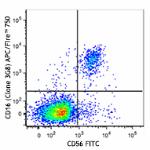
Human peripheral blood lymphocytes were stained with CD56 FI... 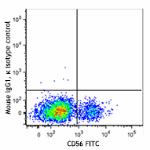
-
PE anti-human CD16
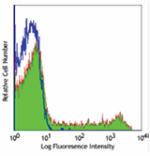
Typical results from human peripheral blood lymphocytes stai... -
APC anti-human CD16
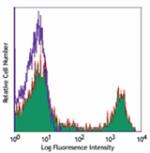
Typical results from human peripheral blood lymphocytes stai... -
Pacific Blue™ anti-human CD16

Typical results from human peripheral blood lymphocytes sta... -
PE/Dazzle™ 594 anti-human CD16
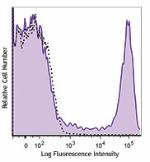
Typical results from human peripheral blood lymphocytes stai... -
TotalSeq™-A0083 anti-human CD16
-
TotalSeq™-B0083 anti-human CD16
-
TotalSeq™-C0083 anti-human CD16
-
PE/Cyanine7 anti-human CD16

Typical results from human peripheral blood lymphocytes stai... -
PE/Fire™ 640 anti-human CD16

Human peripheral blood lymphocytes were stained with CD56 (N... -
FITC anti-human CD16

Typical results from human peripheral blood lymphocytes stai... -
Spark YG™ 581 anti-human CD16

Human peripheral blood lymphocytes were stained with anti-hu... -
APC/Fire™ 750 anti-human CD16

Typical results from human peripheral blood lymphocytes stai... -
TotalSeq™-D0083 anti-human CD16
-
APC/Fire™ 810 anti-human CD16

Human peripheral blood lymphocytes were stained with anti-hu... -
GMP APC anti-human CD16
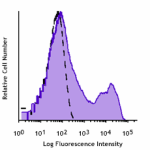
Typical results from human peripheral blood lymphocytes stai... -
GMP PE/Dazzle™ 594 anti-human CD16
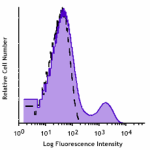
Typical results from human peripheral blood lymphocytes stai... -
GMP PE anti-human CD16
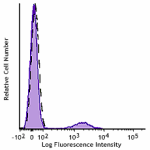
Typical results from human peripheral blood lymphocytes stai... -
Spark Red™ 718 anti-human CD16

Human peripheral blood lymphocytes were stained with anti-hu... -
GMP Pacific Blue™ anti-human CD16
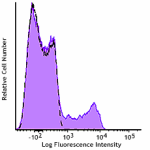
Typical results from human peripheral blood lymphocytes stai... -
GMP FITC anti-human CD16
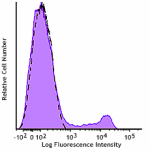
Typical results from human peripheral blood lymphocytes stai... -
Spark Blue™ 515 anti-human CD16

Human peripheral blood lymphocytes were stained with anti-hu... -
Spark UV™ 387 anti-human CD16

Human peripheral blood lymphocytes were stained with anti-hu... -
PerCP/Cyanine5.5 anti-human CD16
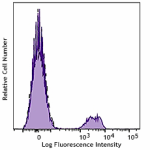
Typical results from human peripheral blood lymphocytes stai... -
GMP PE/Cyanine7 anti-human CD16

Typical results from human peripheral blood lymphocytes stai... -
GMP APC/Fire™ 750 anti-human CD16
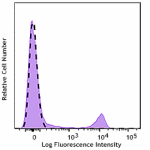
Typical results from human peripheral blood lymphocytes stai... -
Brilliant Violet 750™ anti-human CD16

Human peripheral blood lymphocytes were stained with anti-hu... -
Spark Blue™ 550 anti-human CD16

Human peripheral blood lymphocytes were stained with anti-hu... -
GMP PerCP/Cyanine5.5 anti-human CD16
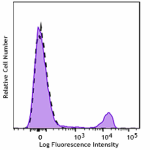
Typical results from human peripheral blood lymphocytes stai... -
Spark YG™ 593 anti-human CD16

Human peripheral blood lymphocytes were stained with anti-hu... -
Spark NIR™ 685 anti-human CD16

Human peripheral blood lymphocytes were stained with anti-hu... -
Spark Violet™ 500 anti-human CD16

Human peripheral blood lymphocytes were stained with anti-hu... -
Spark Blue™ 574 anti-human CD16 (Flexi-Fluor™)
-
Spark PLUS UV395™ anti-human CD16

Human peripheral blood lymphocytes were stained with anti-hu... -
PerCP/Fire™ 806 anti-human CD16

Human peripheral blood lymphocytes were stained with anti-hu... 
Human peripheral blood monocytes were stained with anti-huma...
 Login / Register
Login / Register 













Follow Us